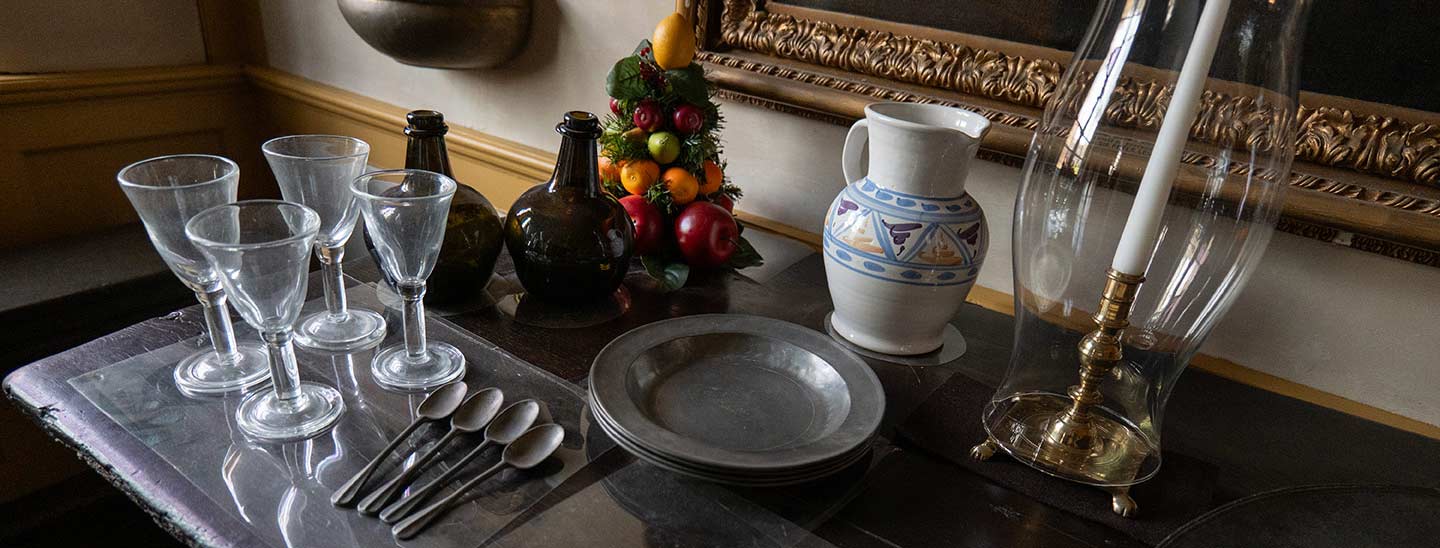
For reservations to experience “nkwiluntàmën: I long for it; I am lonesome for it (such as the sound of a drum)” by Indigenous artist Nathan Young, please go to https://nkwiluntamen.com/
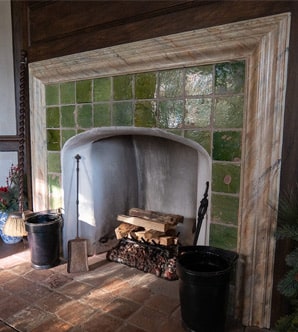
Porch & Governor’s Parlor
Pennsbury was not just a family home. When Penn was in residence, Pennsbury also served as his office and a center of colonial government. The green tiles on this fireplace hearth in the Porch were uncovered by archeologists during the reconstruction of Pennsbury in the 1930s.
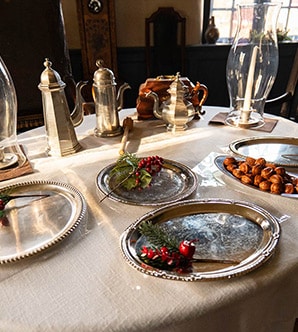
Withdrawing Room
Penn had a private room where he could “withdraw” from his public parlor into a more private space. The only way to enter would have been through the Governor’s parlor. The table is set with three pots for tea, coffee, and chocolate. All of these beverages were expensive imports, affordable only to the wealthy.
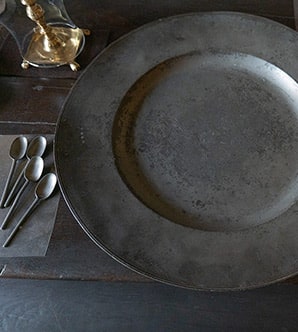
Great Hall
On most days, the great hall was used by servants. Penn and his family only used this room when they had company. On those days, the servants ate elsewhere. This large pewter serving platter called a charger, had been a wedding gift to William Penn and his first wife, Gulielma.
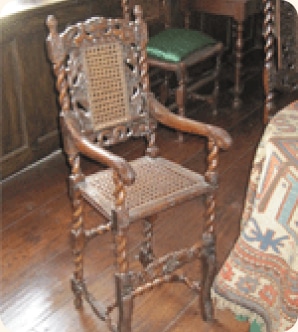
Common Parlor
The common parlor served as a family dining room and a place for Hannah Penn to manage the tasks of running a household. A highchair for baby John, the firstborn son to Penn and his second wife, Hannah, is placed near the table that he may dine with his parents.
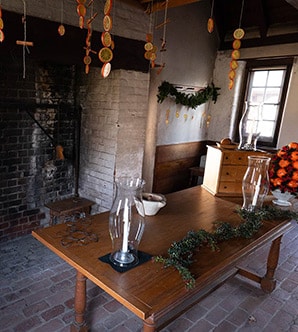
Old Kitchen
It was Hannah Penn’s responsibility to take care of the health of everyone in her “family”, which meant anyone who lived or worked here. Herbs used to make medicine were hung to dry on overhead racks.
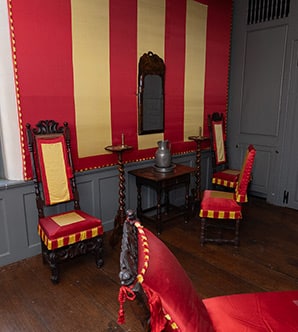
The Best Chamber
While the downstairs was a combination of home and office, the second floor was intended to be family space. We don’t know for sure where each member of the Penn family slept, but we do know there was a chamber Penn referred to as the “best chamber” which had very fine and expensive furnishings.
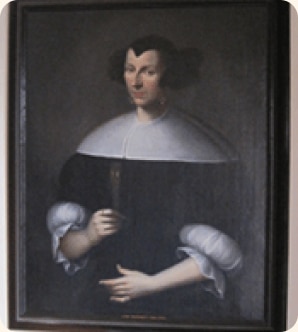
Letitia’s Chamber
Letitia Penn was 21 when she moved to Pennsylvania with her father and step-mother. A portrait of Lady Springett Pennington, Letitia’s grandmother, hangs in her bed chamber.
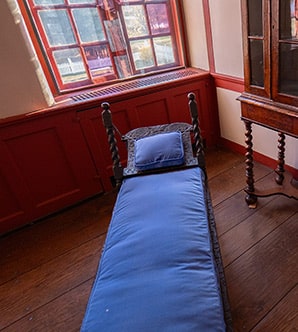
Hannah’s Closet
In the 17th century, a closet was not a place to store things. A closet was a small room. William Penn had his withdrawing room downstairs, and the ladies of the house had this private sitting room upstairs to visit with friends and family. A day bed such as this would often be covered by cushions and pillows.
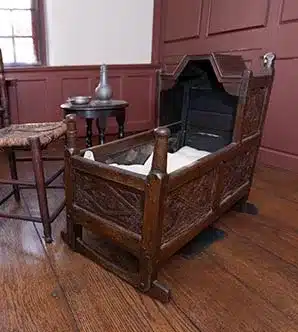
The Nursery
Wealthy families had servants to help care for children. This room functioned both as a nursery for baby John and a bed chamber for his nurse, Ann Harrison.
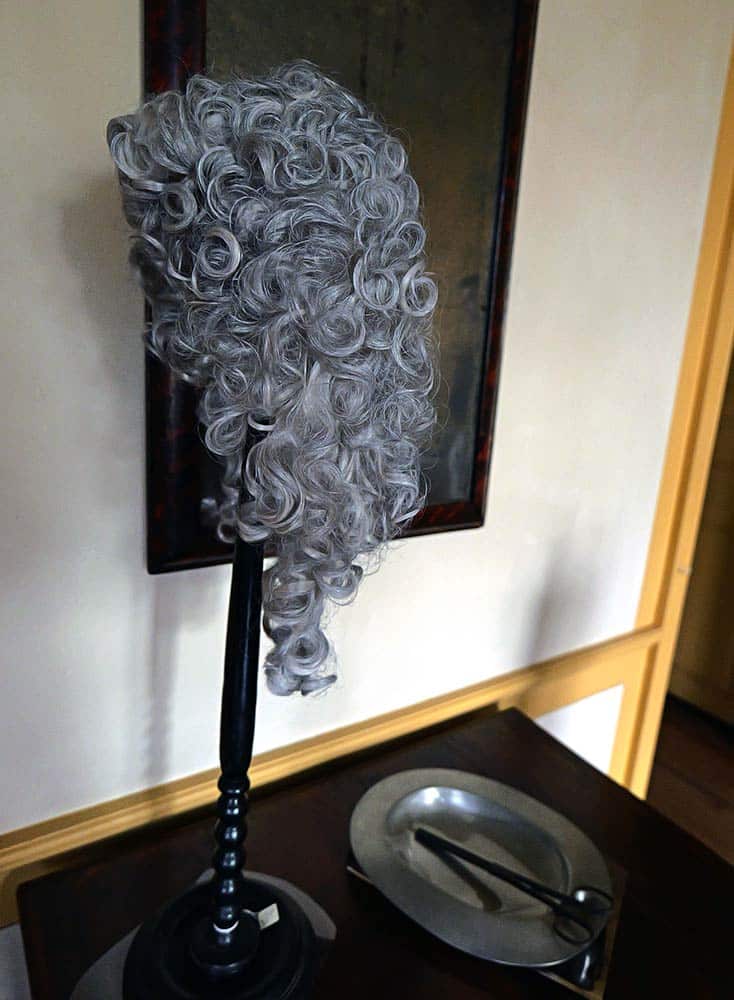
William and Hannah’s Chamber
Penn wanted a country estate to enjoy the peace and quiet of country life, but even his private bed chamber became an extension of his office when illness confined him to bed. However, this room was considered a private space and was not accessible to the public.
